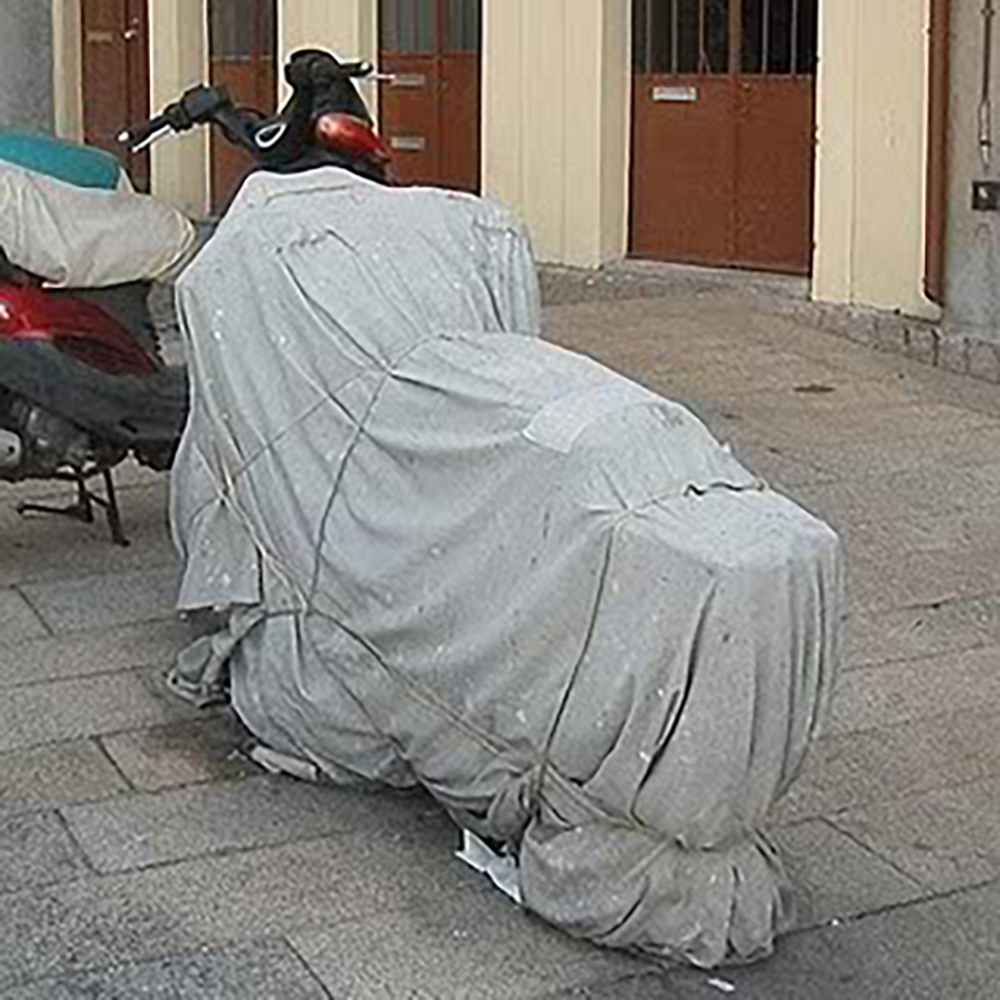
“Christo” from IS IT ART OR FART? blog
Anonymously authored blog-to-book Is is Art or Fart? features snapshots of everyday objects that, in the eyes of the authors, resemble works by contemporary artists. Nobody is safe, even their recognized forefather—Duchamp (posted Sept. 8, 2010). Is it Art or Fart? sends up contemporary art—or does it?
Interview by Brandon Johnson
In the prologue to Is it Art of Fart, “fart” is described as “coincidental moments in everyday life that, when isolated and named by artist, bear uncanny resemblance to art seen in museums and galleries around the globe. Why is it called “fart”?
Art has aura. Farts, as we like to call them, do not. From certain angles or upon first glance, farts might appear auric—but this false or temporary aura quickly dissipates like a passing gas.
Lifted from Wikipedia: In parapsychology and many forms of spiritual practice, an aura is a field of subtle, luminous radiation supposedly surrounding a person or object (like the halo or aureola in religious art). The depiction of such an aura often connotes a person of particular power or holiness.” What do you mean by “aura”? Is art “holy”? Is fart “profane? (Side-note “In Iran the aura is known as farr or ‘glory’”)
Yes, art objects are often treated and revered as special, valuable, holy objects. This is a property of Art that the Roman Catholic Church, the forces of Modernism, and the Contemporary Art Market have all, at different points in Western Art History, desired and worked to uphold. Fart is not art. It’s not profane, nor is it pagan; It is simply a part of regular, everyday, pedestrian life.
I was trying to figure out how this book fits into the grand scheme. At first I thought along the lines of artists as brands, a somewhat cynical/critical approach, but didn’t really see that edge after a second look. Now, I’ve decided it’s more linguistic—a rhyming of objects. The photographed images rhyme with the work they are being identified with in the same way as “fart” rhymes with “art”. What do you think of this theory?
Well, certainly rhyming has something to do with pop music—and pop music is readily accessible and gaseous ether that circulates through contemporary urban life. What we mean to say is that the book is about art-in-popular-life. We are truly indebted to the enduring power of Marcel Duchamp’s readymades—those dramatic gestures that bridged the gap between art and everyday life.
Are there special Duchampian glasses one can wear to gain “fart” vision?
No, not really. Recognizing farts is an uncontrollable phenomenon. It just happens.
Does this book “stick it to” the art world?
There are so many art worlds. The book likely stinks to some of them.
Have any artists voiced offense at this book?
Actually, a few very well-known artists have mentioned their disappointment over not being included!
Blog: http://isitartorfart.blogspot.com/